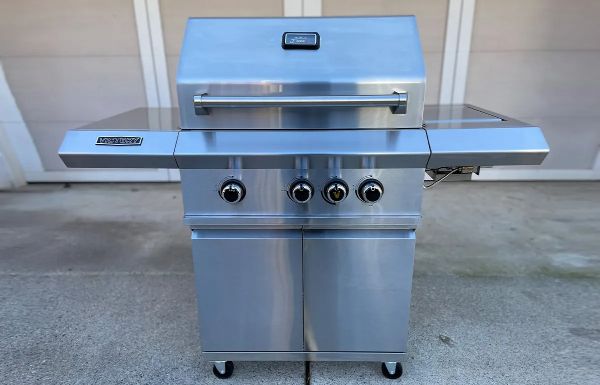Grilling has become an art form, and with advancements in technology, there’s a wide range of grills to choose from. One such innovation is the infrared gas grill, which has gained popularity among grilling enthusiasts. If you’ve heard whispers of this magical cooking tool but are still unsure about its mysteries, fear not!
In this article, we’ll unravel the secrets of the infrared gas grill, explaining what it is, how it works, and why it might just be the key to achieving mouthwatering, perfectly cooked dishes. So, grab your apron and let’s dive into the world of infrared gas grilling!

Table of Contents
What is an Infrared Gas Grill?
An infrared gas grill is a type of grill that utilizes infrared radiation to cook food. Traditional gas grills rely on convective heat, where burners heat the air inside the grill, which then cooks the food.
Infrared grills, on the other hand, use a ceramic or metal plate, often referred to as an infrared burner or emitter, to generate intense heat. This radiant heat directly targets the food, searing it and locking in moisture and flavor.
How Does It Work?
The magic behind infrared gas grills lies in their burner design. The infrared burner contains tiny ports or holes that allow gas to flow. When ignited, the gas flames heat the surface of the burner, which then emits infrared radiation. This radiation is invisible to the naked eye but is absorbed by the food, cooking it from the inside out.
Advantages of Infrared Gas Grills:
- Even Heat Distribution: Infrared grills provide uniform heat distribution across the cooking surface, eliminating hot spots and ensuring consistent cooking results.
- Faster Preheating: Infrared burners heat up quickly, significantly reducing the preheating time compared to traditional grills. This means less waiting time and more time to enjoy your grilled delights.
- Intense Searing: Infrared grills excel at creating a perfect sear on steaks, burgers, and other meats. The high heat generated by the infrared burners quickly caramelizes the surface of the food, resulting in a flavorful crust while sealing in the juices.
- Retained Moisture and Juiciness: The intense heat of infrared grills seals in the natural juices of the food, keeping it moist and succulent. This ensures that your grilled dishes are tender and bursting with flavor.
- Reduced Flare-Ups: Infrared grills minimize flare-ups caused by dripping fats and juices. The radiant heat of the infrared burners vaporizes these drippings before they can ignite, reducing the risk of charring and providing a safer grilling experience.
- Energy Efficiency: Infrared grills are generally more energy-efficient compared to traditional grills. The focused heat of the infrared burners requires less fuel consumption, making them an economical choice.
Considerations and Tips
While infrared gas grills offer many advantages, it’s important to consider a few factors before making a purchase:
- Cost: Infrared grills tend to be more expensive than traditional gas grills due to their advanced technology. Consider your budget and grilling needs before investing in an infrared model.
- Learning Curve: Cooking with an infrared grill may require some adjustment, as the intense heat can cook food faster than you may be accustomed to. It’s important to monitor your food closely to avoid overcooking.
- Maintenance: Infrared grills may require regular cleaning and maintenance to keep the burner and cooking surface in optimal condition. Follow the manufacturer’s instructions for cleaning and care.
- Versatility: While infrared grills excel at high-heat searing, they may not provide the same versatility for low-temperature cooking methods like slow smoking or baking. If you enjoy a wide range of cooking techniques, you may want to consider a grill that offers both infrared and traditional gas burners for added versatility.
- Cooking Surface: Pay attention to the size and configuration of the cooking surface on the infrared grill. Ensure it is sufficient to accommodate your grilling needs, whether you’re cooking for a small family or hosting a backyard barbecue.
—
Infrared gas grills have revolutionized the grilling game, offering intense heat and superb cooking performance. With their ability to deliver even heat distribution, quick preheating, and mouthwatering searing capabilities, they have become a favorite among grill enthusiasts.
However, it’s important to consider your specific grilling preferences, budget, and maintenance requirements before investing in an infrared gas grill. While they excel at certain cooking techniques, they may not offer the same versatility as traditional grills.
Ultimately, whether you choose an infrared gas grill or a traditional gas grill, the key to successful grilling lies in your passion, technique, and choice of ingredients. So, fire up the grill, experiment with flavors, and enjoy the sizzle and aroma of perfectly grilled meals. Happy grilling!
